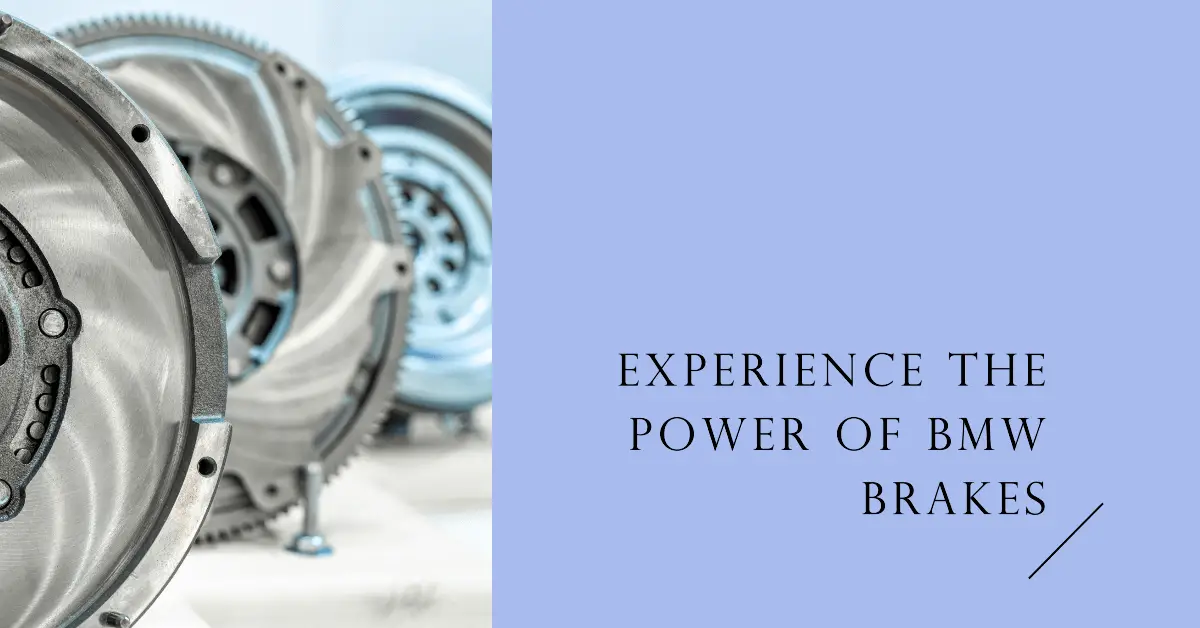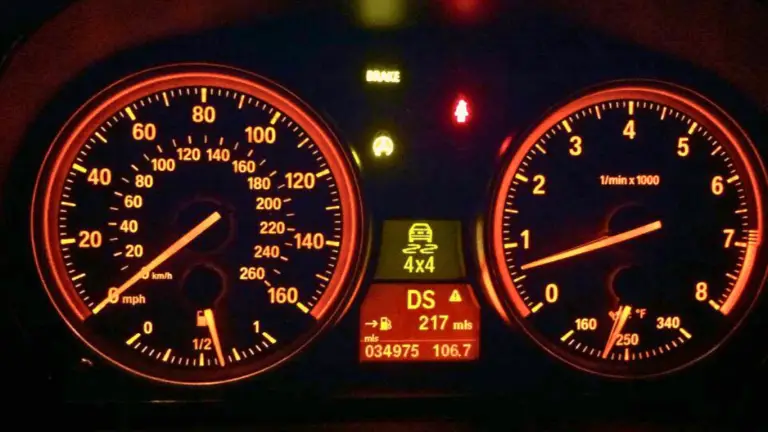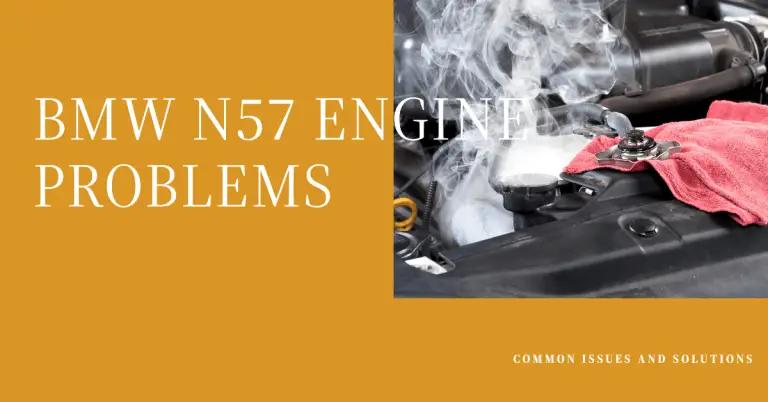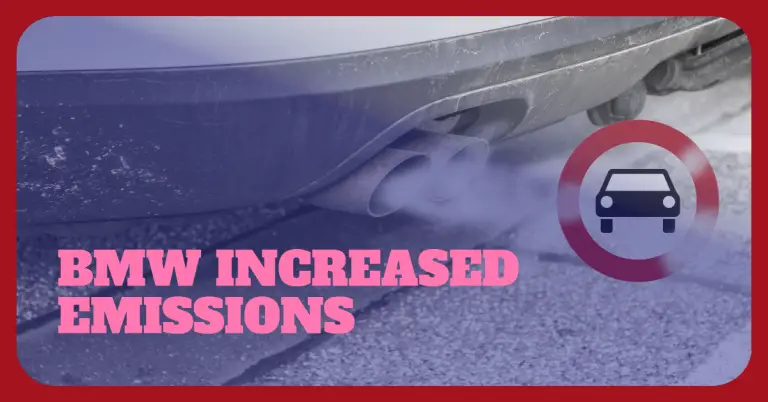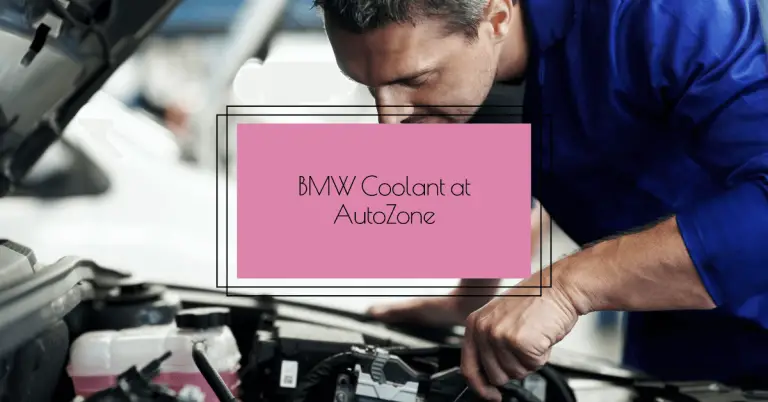BMW Brake System: Drive Moderately Explained
Are you concerned about getting the most out of your BMW’s high performance brakes? Do you want to drive safely while preserving your braking system? If so, how can you properly use your BMW brake system and drive moderately to ensure safety, maximize performance, and extend brake life? The key is understanding your BMW’s brake components, following optimal driving habits, and maintaining your brakes. In this comprehensive guide, we will cover everything you need to know about BMW brakes and moderate driving techniques to get the most out of your vehicle’s braking system.
First, we will explain the brake system basics – how BMW brakes work and their essential components. Next, we will go over specific moderate driving techniques to employ for optimal BMW braking. Then, we will discuss maintenance tips to extend the life of your BMW brake system. By the end, you will have an in-depth understanding of your BMW brakes and how to drive moderately to safely achieve peak performance. Let’s get started!
How Do BMW Brakes Work?
BMW is known for its incredible brake systems that deliver powerful, responsive braking capabilities. But how do these high-tech brakes actually work to slow and stop your vehicle? Here are the key principles:
The core of your BMW brake system consists of brake pads and brake discs at each wheel. The brake pads have a friction material that grips the surface of the brake discs. When you press your foot on the brake pedal, it activates a hydraulic system that uses brake fluid to transfer pressure to the brake calipers.
The calipers then force the brake pads to clamp against the spinning brake discs. This friction between the pads and discs causes your wheels to slow down and stop rotating. The harder you press the brake pedal, the greater the hydraulic pressure applied, and the more grip the pads have on the discs to stop the wheels.
As you can see, it is a beautifully simple and effective system! The responsiveness of BMW brakes comes from the precise hydraulic pressure control and performance-oriented brake components. Now let’s look at what makes up a complete BMW brake system.
Components of the BMW Brake System
While the brake pads and discs are the business end of the system, braking would not be possible without several other vital components:
- Brake Pads – The friction material that clamps against the brake discs to create stopping power. BMW uses high-performance pads optimized for responsiveness, grip, low dust, and durability.
- Brake Discs – The rotors that the brake pads grip to slow the wheels. BMW discs are precisely engineered and ventilated for heat dissipation during heavy braking.
- Calipers – Generate the clamping force on the pads and discs in response to hydraulic pressure from the brake pedal. BMW calipers are made from high-strength aluminum.
- Master Cylinder – Converts mechanical pressure from the brake pedal into hydraulic pressure to activate the calipers. Has a brake fluid reservoir.
- Brake Lines – Sturdy lines that carry the hydraulic brake fluid from the master cylinder to the calipers at each wheel.
- Brake Fluid – Specially formulated hydraulic fluid with a high boiling point that transfers pedal pressure. Needs flushing periodically.
These components all work together seamlessly to deliver precise braking control. Now that you understand the basics of how your BMW braking system functions, let’s go over some optimal driving techniques.
Drive Moderately for Ideal BMW Braking
One of the keys to getting the most out of your BMW brakes is to practice moderate driving habits. Aggressive driving forces the brakes to work harder, generating excessive heat and wear. By driving moderately, you can achieve better braking performance and extend the life of your BMW’s brake components. Here are some tips:
Brake Early and Gradually
Instead of waiting until the last moment to brake hard, get into the habit of braking early and gradually. Light, steady brake pedal pressure allows the pads to generate friction smoothly rather than violently clamping down on the discs. Gradual braking also gives the brake components time to dissipate heat buildup. This prevents overheating and brake fade, where brakes lose stopping power when overtaxed.
Avoid Aggressive Acceleration
Just as hard braking is tough on your BMW’s brakes, so is aggressive acceleration. Punching the gas pedal forces the vehicle speed higher very quickly. This requires harder braking to scrub off that speed. Accelerating moderately means you won’t need to brake as aggressively to control your velocity. Easing off the gas earlier is smarter than riding the brakes.
Leave Ample Distance Between Vehicles
Tailgating is a surefire way to abuse your BMW brakes. It removes your braking options and forces panic stops if the vehicle ahead slows suddenly. Instead, always leave a safe following distance of 3-4 seconds between cars. This cushion gives you ample room to brake gradually instead of stomping on the pedal in an emergency. Proper following distance results in smoother, less stressful driving.
Obey Speed Limits
Respecting speed limits and signs also enables more moderate braking. Remember, the faster you drive, the more distance it takes to fully stop your vehicle. By obeying posted limits, you reduce your speed and subsequent braking distances for safety. This also prevents pounding the brakes to scrub off excessive speed from speeding. Going the speed limit contributes to prudent braking.
Use Engine Braking When Possible
Instead of riding your brake pedal down a steep hill, use engine braking to help control your descent. Simply ease off the accelerator early and allow engine resistance to help slow your vehicle vs. prolonged brake application. For even more engine braking, downshift to a lower gear which drastically cuts speed without using the brakes. Using engine braking reduces brake heat and wear.
Give Yourself Adequate Stopping Distance
Another facet of moderate driving ties back to stopping distances. The faster a vehicle is traveling, the more distance it will take to fully stop. This stopping distance is affected by:
- Perception time – The time it takes you to recognize a hazard and decide to brake
- Reaction time – The time between deciding to brake and actually hitting the pedal
- Braking time – The time it takes to slow the vehicle to a complete stop once braking
Perception and reaction together are typically 1.5 seconds minimum. Braking time depends on your speed and road conditions. At 60 mph on dry pavement, total stopping distance is around 300 feet. But on wet roads, braking distance increases dramatically.
That is why you should build in a cushion of safety space, especially at freeway speeds. If traffic suddenly slows, you want ample room to brake gradually rather than panic stop. Proper following distances also help avoid rear-end collisions in case vehicles ahead stop abruptly.
Give yourself time and space to brake smoothly by maintaining safe following distances. It provides flexibility in braking, enhancing both safety and brake performance.
Use Your BMW Brakes Properly in Wet Conditions
Inclement weather presents an entirely new braking scenario. Water on the pavement significantly affects your BMW brake system’s ability to slow the vehicle. Here are some wet braking techniques:
- Avoid sudden braking – Gently apply light brake pressure to give the pads time to wipe water from the discs and create friction. Sudden hard braking can cause complete brake lockup.
- Dry the rotors if they get wet – If discs and pads get very wet, apply steady light braking pressure while moving to dry them and restore friction.
- Increase following distance – Expand the space cushion to account for longer wet braking distances in rain or snow.
- Stay off deep water – Deep puddles can get sucked into the brakes, reducing friction. Find another route or wait for the water to dissipate.
- Check brake performance – After driving in heavy rain or deep water, check that the brakes apply and release properly when dry.
With the right techniques, you can safely operate your BMW brakes in wet conditions. But it requires conscious changes to your driving style and braking habits. Being smart and proactive goes a long way toward wet weather safety.
Techniques for Downhill Braking in Your BMW
Long, steep descents are especially demanding on your BMW brake system. Maintaining speed control going downhill without cooking your brakes takes proper technique:
- Do not ride the brakes – Keeping the brake pedal pressed will overheat the pads and discs within minutes. Use very light intermittent braking.
- Use low gears for engine braking – Downshift and let the engine’s resistance help control speed vs. prolonged brake application.
- Know the route – Study the descent so you can anticipate curves and needed speed adjustments.
- Check brake condition – Brakes should cool and recover between light applications. Pull over if brakes start fading.
- Allow recovery time – After a long downhill, drive normally for a few miles so the brakes can fully cool.
- Avoid sudden hard braking – Gradual pressure allows better speed control compared to abrupt heavy braking.
Mastering downhill braking techniques gives you better control while minimizing brake wear. With the right approach, you can conquer steep grades safely.
Tips for Proper Use of BMW Brakes
Now that we’ve covered driving habits for brake preservation, let’s discuss proper operation. Here are some key tips on the best practices of using your BMW brakes:
- Do not “ride the brakes” – Keeping gentle pressure on the pedal all the time overheats the system and creates uneven pad wear.
- Do not rest your foot on the pedal – This builds pressure and prematurely wears pads and discs.
- Smooth, steady pedal pressure – Jamming on the pedal abruptly puts massive force on components and reduces braking effectiveness.
- Allow time to dry brakes if wet – Never aggressively apply brakes if the system is very wet. Build pressure to wipe friction surfaces dry.
- Firm pressure for ABS activation – In an emergency stop, bear down firmly on the pedal to activate the Anti-lock Braking System. Do not pump the pedal.
- Know what normal vs. abnormal braking feels like – Any change in pedal pressure, vibration, or noise should be investigated immediately.
Proper braking habits will help you safely get the best performance from your BMW. Next, let’s go over maintaining your brake system.
Maintaining Your BMW Brakes
Like any high-performance system, your BMW brake components require proper maintenance to keep performing at their peak. Here are the key maintenance tips:
1. Replace Brake Pads and Discs per Specifications
BMW brake pads and discs are wear items designed to be replaced at certain mileage intervals. Consult your owner’s manual for the recommended change intervals. Replacing pads and discs per BMW’s specifications ensures the system stays in proper working order.
Be aware that aggressive driving, wet conditions, and mountain driving may require more frequent pad and disc changes than normal driving. Any unusual vibration, squealing or grinding noise indicates worn components that should be immediately inspected and replaced as needed.
2. Flush Brake Fluid per Service Schedule
Over time, brake fluid absorbs moisture which reduces its boiling point and performance. BMW recommends flushing the entire brake hydraulic system based on either time or mileage intervals, whichever comes first.
Use only DOT 4 brake fluid approved to BMW specifications. Ensure the master cylinder reservoir stays full between brake service. Check for any fluid leaks around the brake system which can introduce air into the hydraulics.
3. Inspect Brake Lines, Calipers and Hardware
When changing pads and discs, it is a perfect opportunity to inspect the rest of the system. Look for cracked brake lines, damaged caliper pistons, seized slider pins, worn bushings, and any loose or corroded hardware. Addressing these items ensures smooth braking.
4. Bed-In New Brake Pads and Discs
After new pads and discs are installed, follow a proper bed-in procedure. This involves a series of light brake applications to transfer material to friction surfaces and establish ideal pad-disc contact. Bedding in new components fully optimizes braking performance.
By staying diligent with scheduled brake system maintenance, your BMW will stop safely and effectively for years to come.
Symptoms of BMW Brake Problems
Being aware of the signs of potential brake issues in your BMW can prevent small problems from becoming major repairs. Here are some common symptoms of brake problems:
- Vibration or shaking in the steering wheel/chassis when braking – Indicates warped brake discs that need resurfacing or replacement
- High-pitched squealing or grinding noises – Denotes brake pads wearing down to the end of their service life
- Spongy brake pedal with excessive travel – Signals air in the hydraulic lines that needs to be bled from the system
- Brake pedal suddenly drops to floor – Points to a hydraulic issue like a master cylinder leak or rupture in a brake line
- Uneven brake pad material wear – Mean a caliper slide pin is sticking and needs lubrication
- Steering pulling to one side under braking – Indicates a pads issue on that wheel such as uneven wear, overheating, or contamination
- Excessive brake dust on one wheel – Suggests the caliper on that corner is sticking and applying pressure
- Brake warning lights illuminated on the dashboard – Require immediate attention to determine the cause. Don’t drive with the warning light on.
Addressing brake problems promptly reduces the risk of being caught with compromised brakes. Know the symptoms so you can have any issues inspected right away.
Ideal Braking Practices for BMW Performance Driving
BMWs are renowned for incredible brakes designed to handle the rigors of high performance driving. But even these outstanding brakes require proper use on the track or autocross course to achieve the best stopping power lap after lap. Here are some pro tips:
- Select a higher performing pad – Upgrade to more aggressive pads designed specifically for track use for maximum friction and heat tolerance.
- Flush old brake fluid – Ensure fresh, high-quality fluid for precise pedal feel and hydraulic strength.
- Install upgraded brake lines – Braided stainless steel lines provide unrestricted fluid flow under hard braking.
- Allow pads and discs to reach temperature – Execute light braking applications initially to warm the system to operating temps before charging into a corner. Avoid hammering cold brakes.
- Trail brake into corners – Progressively apply brakes entering a corner to transfer weight forward and increase grip. Release the brakes just before the apex to prevent instability.
- Focus brake force on front tires – Front brakes provide the majority of the stopping power, especially with BMW’s brake balance set to the rear. Focus your braking effort through the front pedal.
- Cool components between sessions – Keep wheels turning after a hot lap to circulate air through brake parts. Add ducting if needed.
High performance driving demands precise braking finesse. Follow these tips to help your BMW brakes perform at their peak on the track.
Signs Your BMW Brakes Need Service
To keep your BMW’s brake system in optimum condition, be alert for any of these signs that indicate servicing is required:
- Brake pedal feels soft or spongy
- Brake pedal travels too far before braking engages
- Brakes squeal loudly when applied
- Vehicle pulls to one side under braking
- Brake pedal pulsates under braking
- Reduced braking performance
- Uneven or rapid brake pad wear
- Leaking brake fluid
- Brake warning light illuminated on dash
Addressing these issues promptly will restore your BMW braking to proper working order. Minor problems can quickly turn major if left unchecked. Regularly inspect your BMW’s brake system and immediately service any items you notice.
FAQ About BMW Brakes
Let’s review answers to some frequently asked questions about BMW brake systems:
How often do BMW brake pads and rotors need replacing?
On average, BMW brake pads last 30,000-40,000 miles while rotors can last 60,000 miles or more. Actual change intervals depend on your driving habits and conditions. Inspect wear indicators regularly.
What brake fluid does BMW recommend?
Always use a high quality DOT 4 brake fluid approved to BMW specifications, such as Castrol SRF. Avoid DOT 3 fluid and generic brands.
Should I bed-in new BMW brake pads and rotors?
Yes, proper bed-in helps transfer material for better pad/disc contact and is essential for optimal performance. Follow the recommended procedure.
Can I upgrade my BMW brake pads and rotors?
Yes, many aftermarket options offer increased friction and heat resistance. Stick with reputable brands designed for your specific BMW model.
Why does my BMW brake pedal pulsate?
Pulsation is caused by “warped” discs that need resurfacing or replacement. It can also indicate worn wheel bearings.
How do I bleed BMW brakes at home?
Use a brake bleeder tool to cycle fluid through each caliper’s bleed valve to remove air. Refill fluid after. Use proper DOT 4 fluid only.
My BMW brake light is on – what should I do?
Do NOT drive with the brake warning light illuminated. Have the car towed to a repair shop immediately to diagnose the cause.
By staying informed on BMW brake topics, you can make educated maintenance decisions and react appropriately if issues arise. Check your owner’s manual for model-specific tips.
Drive Safely With BMW’s High Performance Brakes
After reading this guide, you now have the knowledge to properly operate your BMW brakes for optimum performance and safety. Just remember:
- Understand your BMW brake components and how they create stopping power
- Employ mindful driving habits like gradual braking, proper following distances, and avoiding aggressively speeds
- Maintain the system with scheduled fluid flushes, pad/disc changes, and component inspections
- React promptly if you notice any signs of brake problems or deterioration
Applying moderate braking practices and staying diligent with service will ensure your BMW’s sophisticated brakes function.

